737-215-3211

Training Your Puppy How To Use A Dog Door: Step-by-Step Guide
Training your puppy to use a dog door is an essential milestone in their development. Not only does a pet door provide them with more independence, but it also offers you the convenience of not having to play doorman to your furry friend's outdoor adventures.
Embarking on this training journey requires patience, consistency, and an understanding of your puppy's learning pace. It might be challenging at first, but with patience, consistency, and positive associations, your puppy will be able to use their new dog door, in no time!
Here's a step-by-step doggy door training guide for all dog owners.
Importance of Dog Door Training
Training your dog to use a doggie door is more than just a convenience; it's a crucial step in nurturing their independence and confidence. This simple skill offers a myriad of benefits, from enhancing your pet's physical and mental well-being to providing peace of mind for busy pet owners.
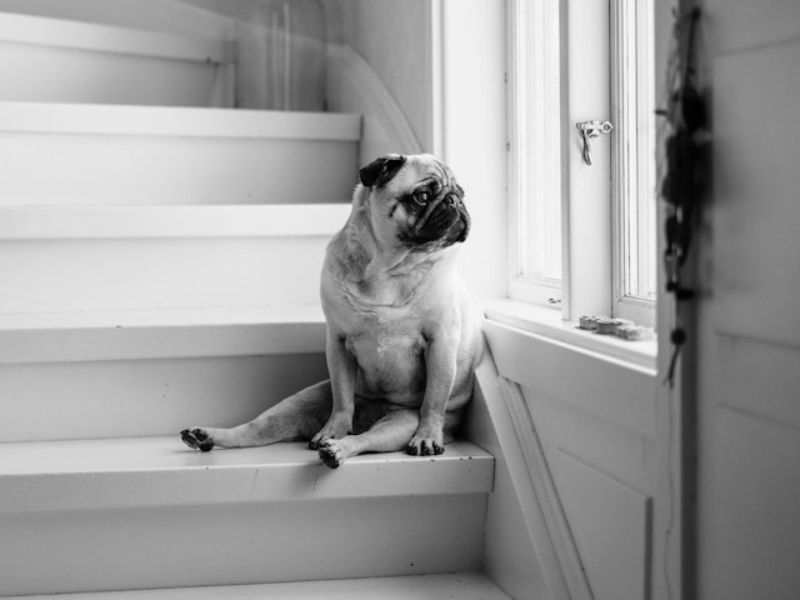
-
Enhances Independence and Confidence: Training your dog to use a dog door fosters a sense of independence and self-reliance. Hence, boosting their confidence and helps in developing a well-adjusted and self-assured adult dog.
-
Convenience for Owners: Dog door allows your dog access to the outdoors for bathroom breaks or playtime without human assistance, reducing the stress of rushing home for potty breaks.
-
Promotes Physical Exercise and Stimulation: With the freedom to move in and out, puppies are more likely to engage in physical activity, ensuring they get enough exercise. This freedom helps in maintaining their physical health and wards off boredom-related behaviors.
-
Improves House Training: A doggie door can significantly aid in-house training. Puppies learn to go outside to relieve themselves, reducing the likelihood of accidents inside the house and reinforcing good potty habits.
-
Reduces Separation Anxiety: Having the option to explore outside can alleviate feelings of separation anxiety, as it gives them something to do, breathe fresh air, and explore when alone.
-
Safety in Emergency Situations: In case of an emergency at home, such as a fire or an intruder, a dog door provides an escape route for your pet, potentially saving their life.
-
Controlled Outdoor Access: Pet doors can be locked, giving owners control over their pet’s outdoor access. This feature is beneficial for managing the times your dog goes out, ensuring their safety during unsupervised hours, especially at night.
Choosing the Right Dog Door
Selecting the right dog door is crucial for the comfort and safety of your canine companion. Follow these five essential steps to ensure you choose the right dog door that best suits your dog's size, your home's design, and your security preferences.
Understanding Your Dog's Needs
The first step in choosing a new door for your dog to use is to understand your their specific needs.
Consider your pet's size, breed, and activity level. A larger breed will need a bigger doggy door, and an active dog might benefit from a more durable design. This step ensures the pet door you choose will be comfortable and accessible for your pet.
Measuring for Size
Accurately measure your dog to ensure a proper fit.
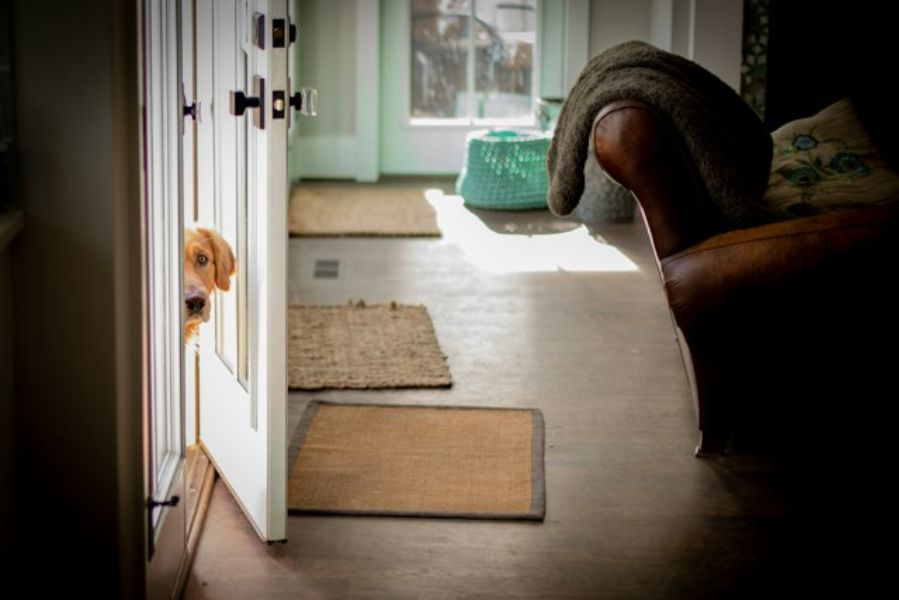
Measure both the height and width of your dog at their widest and tallest points, usually the chest for width and the shoulder for height. Add a couple of inches to both measurements to ensure your dog can pass through comfortably without stooping or squeezing.
Also, consider the age of your small dog. Puppies will grow and they'll need a bigger doggie door to pass through. It's best to consider the size of your furry friend while growing up. They should be able to pass through the doggie door opening with ease.
Evaluating Door Types
Evaluate the different types of dog doors available.
Consider whether you need a standard flap door like the Security Boss MaxSeal PRO High-Grade Aluminum Dog Door, an electronic door that opens only for your dog like PlexiDor Automatic Electronic Dog Door, or a sliding glass door insert like PlexiDor French Door Dog Door Inserts. Each type has its benefits and drawbacks, such as security features or ease of installation, so choose one that aligns with your living situation and security concerns.
Considering Installation Location
Consider the installation location carefully.
Dog doors can be installed in doors, walls, or even glass. The installation location might affect the type of dog door you choose. For example, a doggy door installed in a wall like PlexiDor Wall Series Pet Door might require a different flap design or additional tunnel extensions
Prioritizing Security and Energy Efficiency
Lastly, prioritize security and energy efficiency.
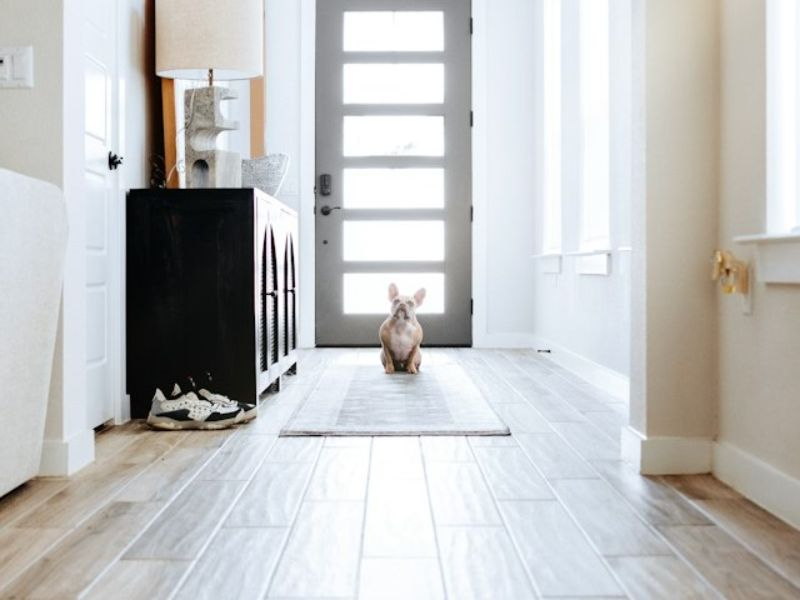
Look for dog doors with locking mechanisms like Security Boss Standard Lockable Patio Pet Door to control your pet's access and keep unwanted animals out. In addition, choose a door with weatherproof like PetSafe Extreme Weather Pet Door features or energy-efficient designs to help maintain your home's temperature and reduce energy costs.
Step-by-Step: Training Puppies in Using Dog Doors
Training your dog to use a dog door is a valuable skill that enhances both their independence and your convenience. By following a structured, step-by-step approach, you can ensure a smooth and successful training sessions and process.
Familiarization
Begin by allowing your puppy to become familiar with the dog door. Encourage them to explore the area around the door without any pressure to use it.
Positive reinforcement, such as treats and praise, can help create a positive association with the pet door, making them more likely to approach it confidently. To train your dog, use Omega Fields Smart Hearts Dog Treats, verbal encouragement, verbal praise, and their favorite dog toys.
Doggy Door Initial Interaction
Once your puppy seems comfortable around the dog door, encourage your dog to interact with it is the next step in the training.
Start with the pet door open. Coax them through the doggy door opening with treats or their favorite toy. This initial interaction should be stress-free, aiming to get them used to the idea of passing through the doorway.
Make it as fun and interactive as possible. Coax your dog until they are comfortable going through with the dog door.
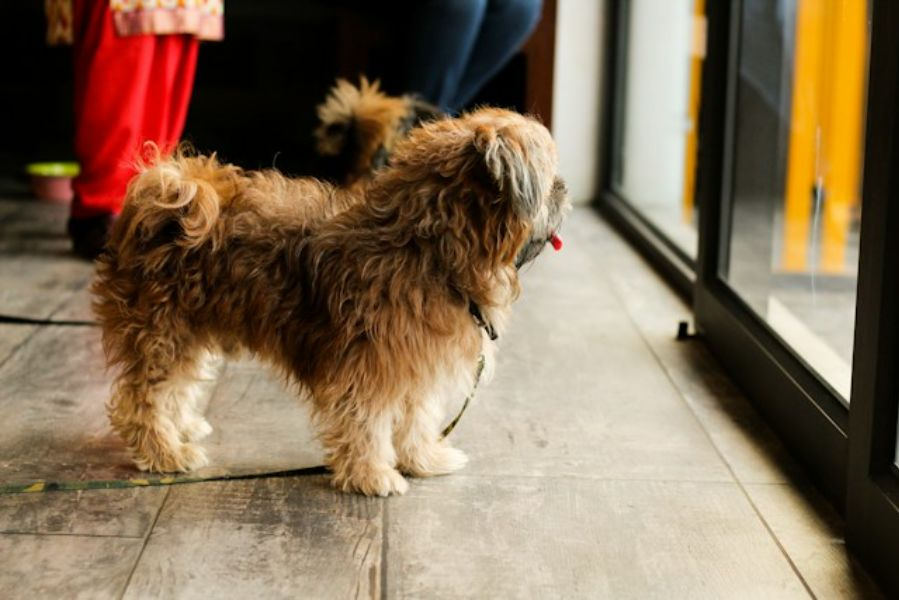
Start with showing your pet the open door using treats and positive reinforcement while you're at the opposite side of the door.
Introduce Dog Door Flap
After your puppy is comfortable going through the open doggy door, it's time to introduce them to the flap.
Initially, lift the flap open slightly so they can see through. Encourage them to push their head through with the aid of treats. Gradually letting the flap rest more on them each time to get them used to the sensation.
Train your dog to use by holing the flap open until they get used to opening it themselves.
Encourage Independent Use
The next step is to encourage your dog to use the new door without your direct assistance.
Place treats on the other side of the door to motivate them to go through independently. This may require some patience, as some puppies may be hesitant at first, but consistent encouragement will lead to success.
Be Consistent
Consistency is key in dog door training session.
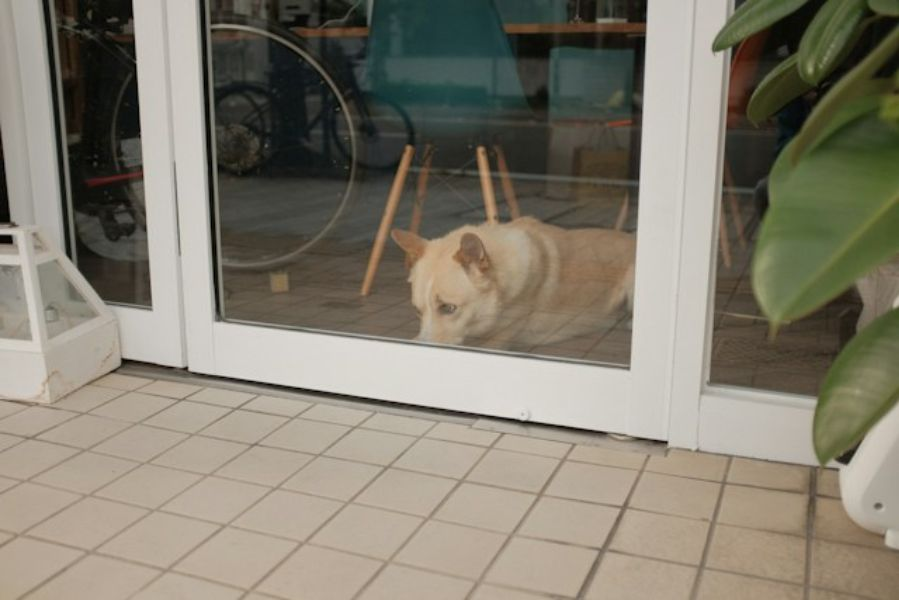
Practice regularly, and always use positive reinforcement to encourage your puppy. Over time, they will become more confident in using the door, eventually using it without any hesitation or need for prompts.
It might take about a month, a few weeks, or days, depending on your pets.
Dog Door Training Tips
Training your puppy to use a dog door can be a smooth and stress-free experience with the right approach. Here are some tips to make the training process easier for both dogs and their owners:
-
Start Young: Younger dogs often learn faster. Train your dog as soon as they're comfortable and settled in their new home.
-
Keep Training Sessions Short: Puppies have short attention spans. Keep training sessions brief but frequent to maintain their interest without overwhelming them.
-
Be Patient: Every puppy is unique and learns at their own pace. Show patience and never force your puppy through the door, as this could lead to fear or resistance.
-
Demonstrate: Puppies learn by example. If possible, have an older, trained dog use the door to demonstrate. Alternatively, you can gently show your puppy how to push the door open.
-
Ensure Safety: Make sure the area outside the dog door is safe and secure for your puppy to explore. Remove any potential hazards and ensure the yard is enclosed.
-
Gradual Introduction: Start with the flap taped up or removed entirely, allowing your puppy to pass through freely. Gradually lower the flap over time as your puppy becomes more comfortable.
-
Use Visual Cues: Place a distinct mark or tape on the flap to help your puppy see it better. This can be particularly helpful in the initial stages of training.
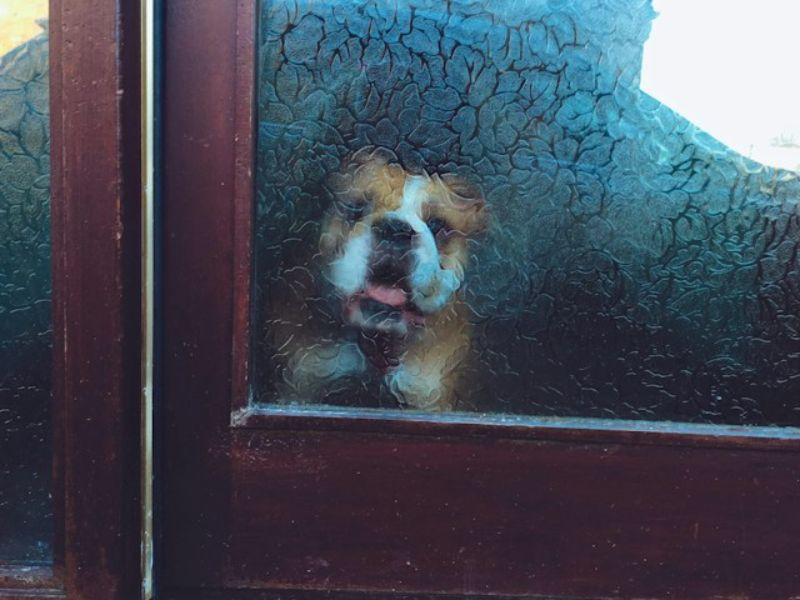
Install the Best Doggie Door from Puppy Fever Pro
Having a dog door installed has a lot of benefits aside from potty training, letting fresh air into the house, and letting cold air enter. However, most dogs, especially puppies, tend to avoid new things if they're unfamiliar with them.
It's best to train your dog by yourself or by a family member to help encourage them to try and use the dog door independently. Be patient and consistent.
If you still don't have a dog door at home, browse through our high-quality dog doors. Puppy Fever Pro have different types and sizes of pet doors to choose from. For more dog owner training tips and tricks, go to our blogs.
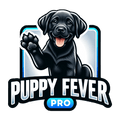

Leave a comment